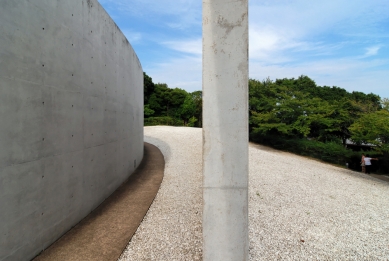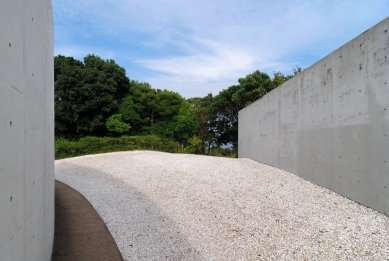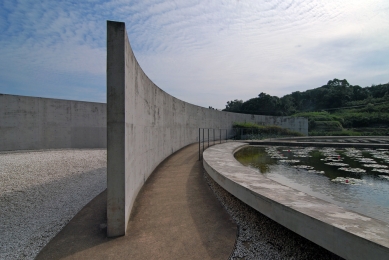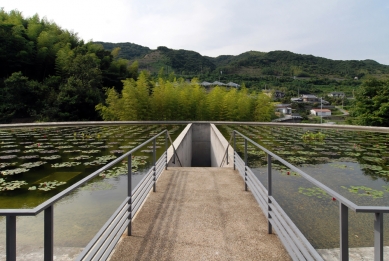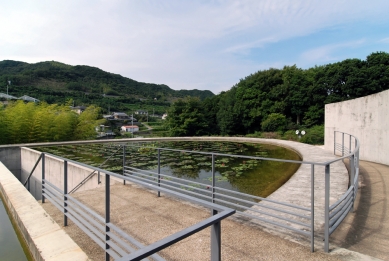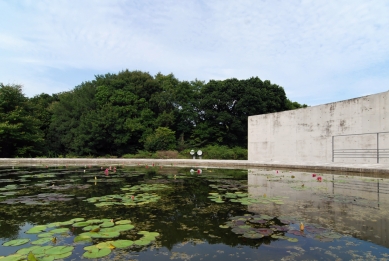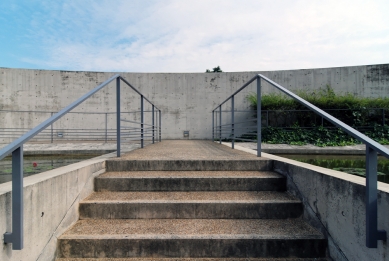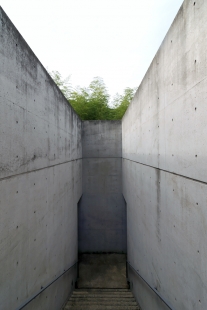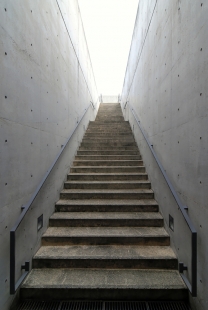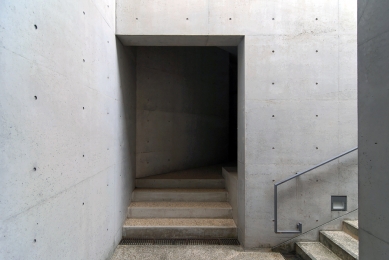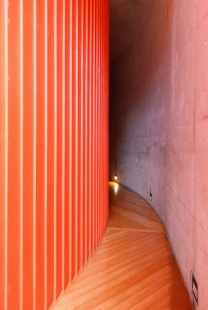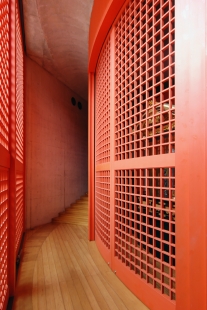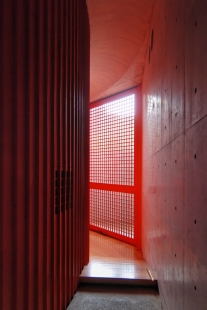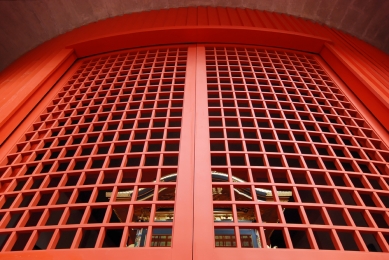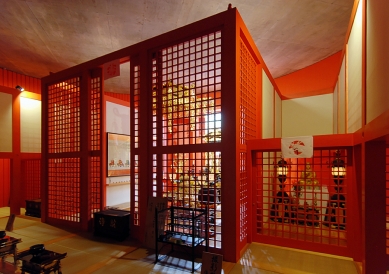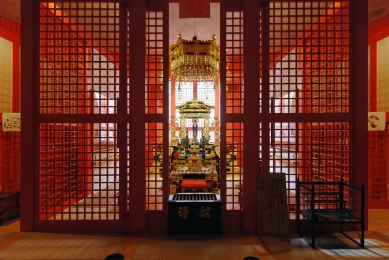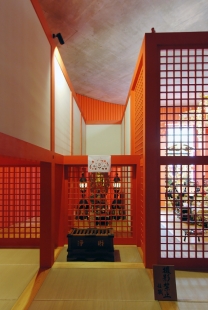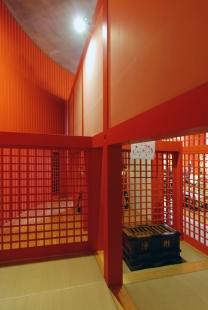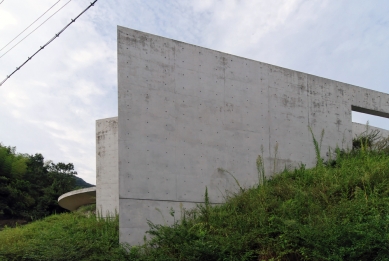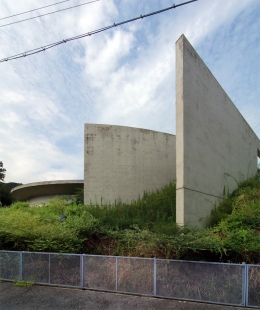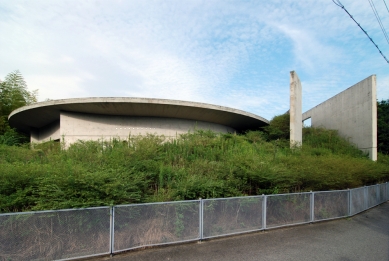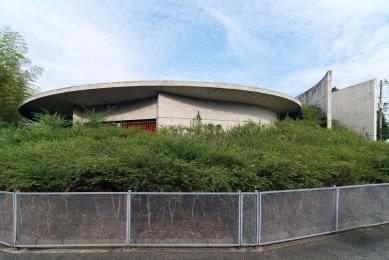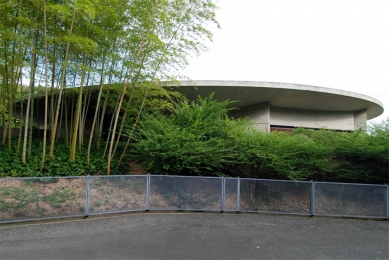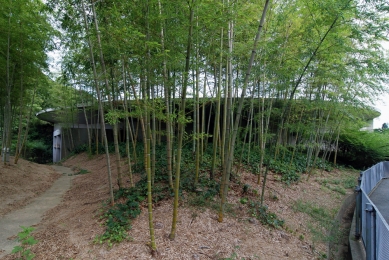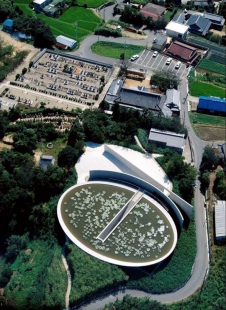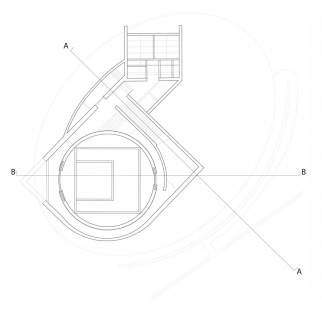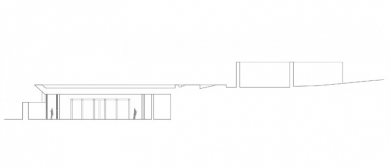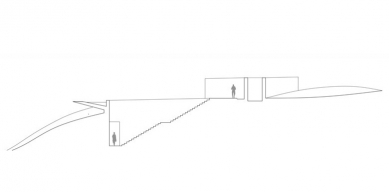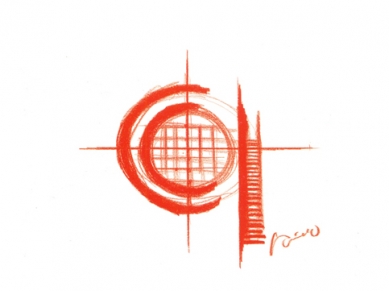
Water Temple
Shingonshu Honpukuji

 |
T.Ando
The Temple, originally for the Shingon Buddhist Sect, is approached from a long uphill path traversing the original temple compound and cemetery.
One is then directed, indirectly, through a simple series of two gesturing white-washed concrete walls of light and shadow that eventually lead one to what seems like a pool of water. The pool itself is filled to its outermost perimeter, forming a boundless horizon line about which it infinitely reflects its surroundings of mountains, sky, rice paddies and bamboo groves. The stillness of the water has a meditative effect and perhaps implications of a spiritual cleansing.
A concrete stairway which cuts the circular pool in two symmetrical halves descends down into momentary darkness from the light, below the water, and, eventually, into the sacred space of the Buddhist temple. Contrary to the monochromatic approach through the white walls and neutral concrete stair, the interior of the temple is saturated with color. The circular space is filled with an intense red-orange light which seems to be pulsating from its core, the inner most and most sacred space of the temple which houses the Buddha statue.
Again, one does not approach the inner sanctuary of the temple directly but circulates around the inner sanctuary where the color gradually becomes more and more intense and eventually reveals itself as one follows the silky smooth concrete walls to the light source.
The vermilion red color is most intense during sunset as light radiates through a western facing window. This western light has symbolic meaning because Buddha originates from the west (India). The precedent for this relationship between temple and western light is Jodo-ji Jodo-jo temple in Hyogo-ken prefecture by Buddhist monk and architect Chogen in 1192.
Also located on Awaji Island not far from the Water Temple is Awaji Yumebutai, a mixed-use complex containing a hotel, conference center, chapel, gardens, restaurants, outdoor auditorium and green houses by Tadao Ando.
0 comments
add comment


